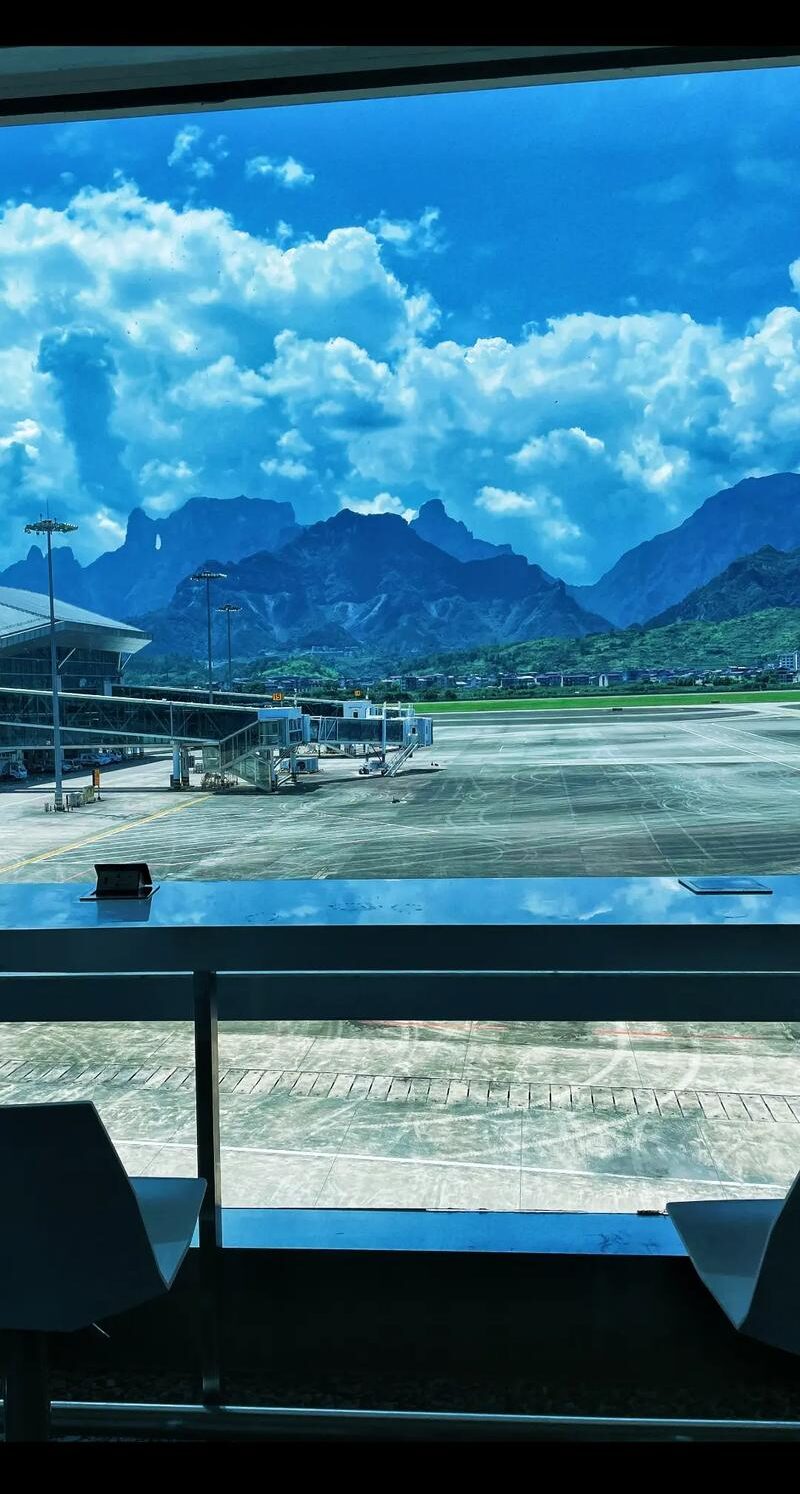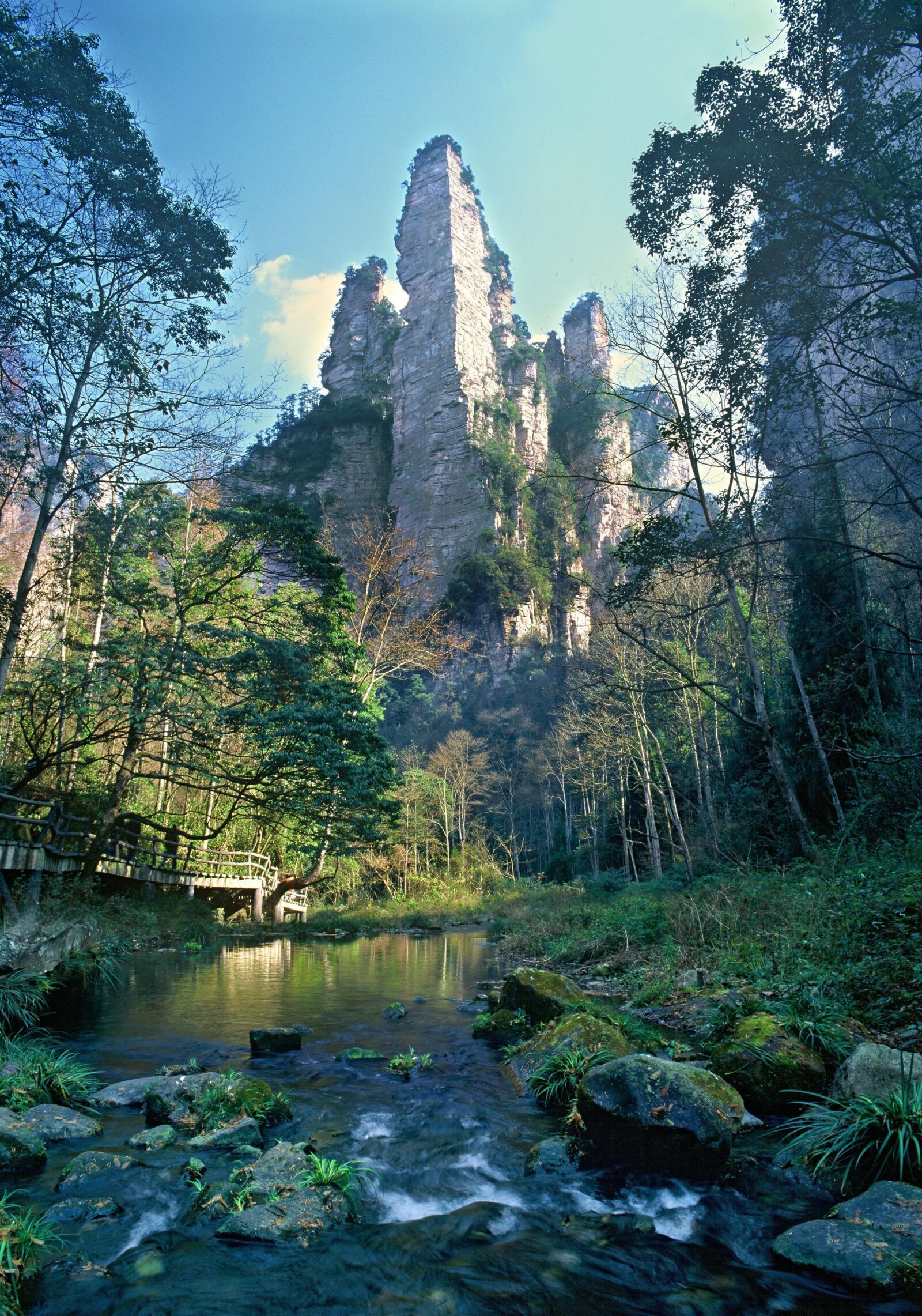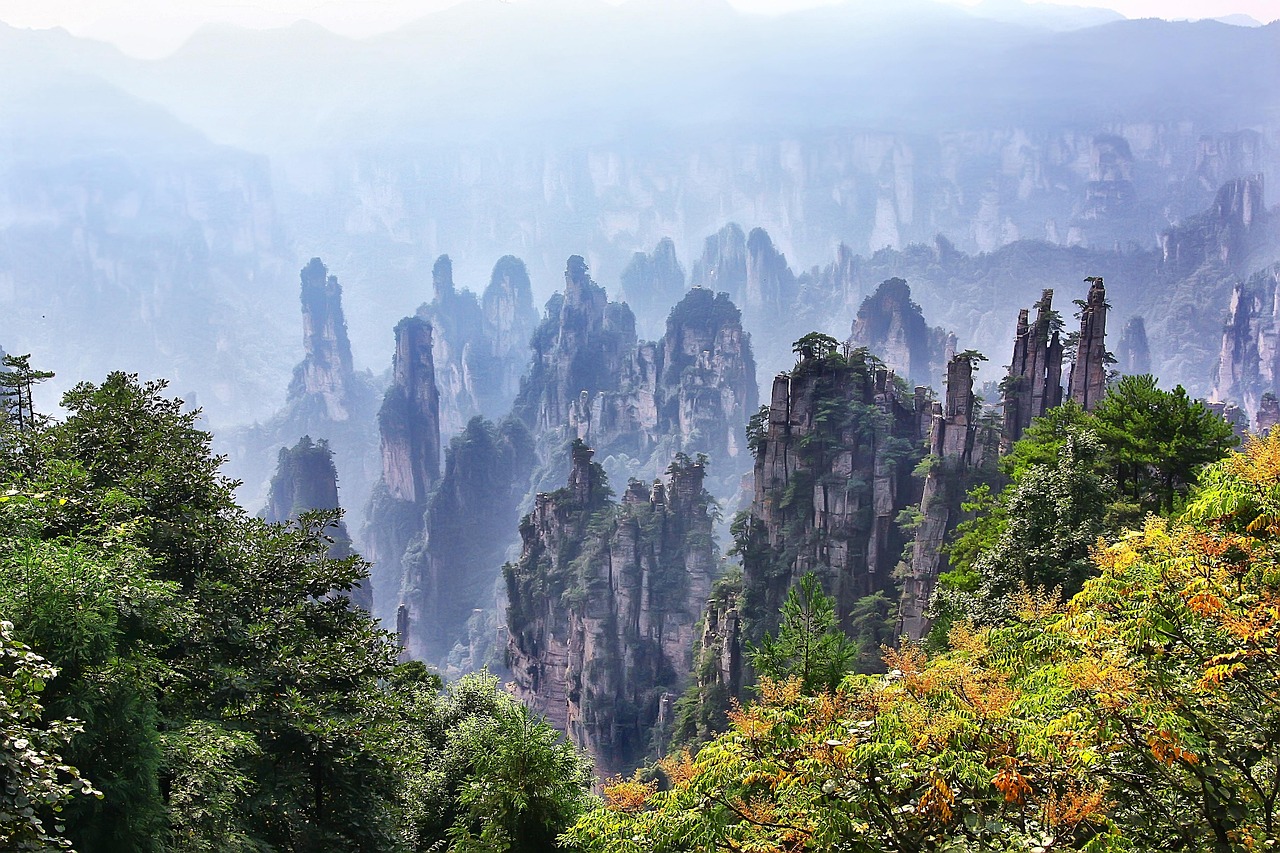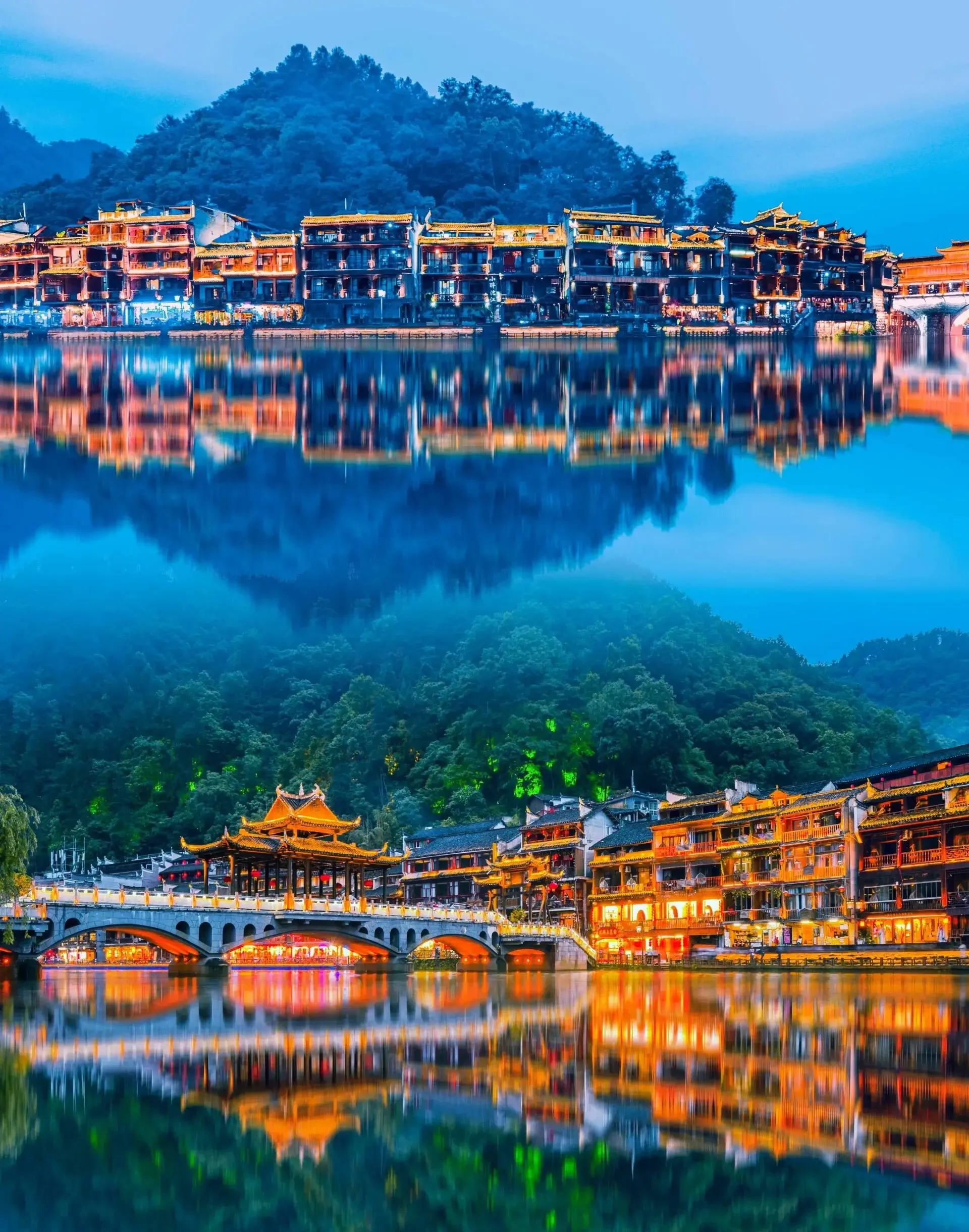There’s something unusually calm about arriving at Zhangjiajie Airport. It’s humid, warm, and smells faintly of trees. This isn’t Beijing or Shanghai. Zhangjiajie Airport is tiny, sure, but it leads somewhere magical. People aren’t rushing. A guy in a loose T-shirt offers you a ride, grinning like he’s known you for years. The signs? Some have weird English, but they get the job done. You’re not lost. You’re just... not home anymore.
Whether you’re here for the mountains, the glass bridge, or just to see what Avatar was based on, this little airport is where it all starts. And honestly? It’s the kind of place that makes travel feel like an adventure again!
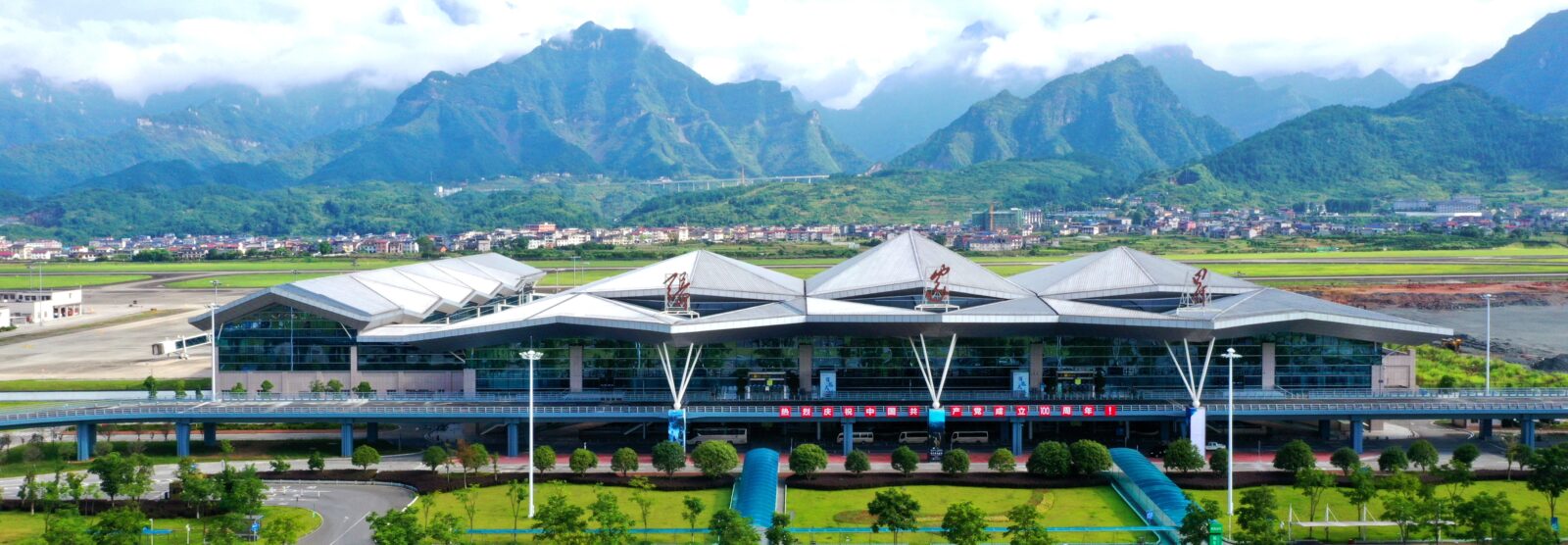
Zhangjiajie Hehua Airport
Zhangjiajie Airport Overview
Tucked away in Hehua Village, Zhangjiajie Airport doesn’t look like much when you land—but it’s the one airport that actually matters if you’re trying to reach the Zhangjiajie National Forest Park or Tianmen Mountain. It’s around 10 kilometers from the city center and roughly 40 kilometers from Wulingyuan, depending on which route your driver takes (and how honest they are about the meter).
Since it opened back in 1994, it’s quietly become the main gateway for millions chasing mountain air and glass bridges. The airport itself? Compact. Two terminals, though you’ll probably only use Terminal 2 for most domestic flights. There’s a kind of stripped-down functionality to it—no glitz, but rarely confusing either.
The best thing? It puts you close. No long transits, no switching trains for hours. If you're heading to nature, zhangjiajie airport drops you within striking distance. And that’s honestly the most useful kind of airport there is.
| Item | Details | Item | Details |
|---|---|---|---|
| Chinese Name | 张家界荷花国际机场 | Terminal Area | 46,500 m² (as of June 2019) |
| English Name | Zhangjiajie Hehua International Airport | Aircraft Stands | 21 (as of June 2019) |
| Airport Code | IATA: DYG, ICAO: ZGDY | Runway Length | 2,600 meters (single runway) |
| Date of Opening | August 18, 1994 | Accessible Cities | 28 cities (as of October 2019) |
| Airfield Class | 4D | Annual Passenger Volume | 2,870,800 (2019) |
| Airport Type | Civil Transport Airport | Annual Cargo Volume | 1,700 tons (2019) |
| Location | Zhangjiajie, Hunan Province, China | Annual Flight Operations | 25,500 (2019) |
| Regional Management | CAAC Central-Southern Regional Administration | Operating Company | Hunan Airport Group – Zhangjiajie Hehua Branch |
| Domestic Terminal | Terminal 2 (main terminal in use) | International Terminal | Within Terminal 2 |
| Distance to City Center | Approx. 10 km | Distance to Wulingyuan | Approx. 40 km |
| Public Transport Access | Buses 401/402, Loop 4, shuttle, taxis | VIP Lounges | No.2 & No.5 (Domestic), First Class Lounge (International) |
Flights and Airlines

Aircraft Parked at Hehua Airport
Domestic Flights from Zhangjiajie
You’d think a place like Zhangjiajie—tucked deep in Hunan’s mountains—would be hard to reach, but surprisingly, zhangjiajie airport connects to more cities than most people expect. You can fly in from Beijing, Shanghai, Xi’an, Changsha, Guangzhou, even Harbin, if you don’t mind the north-to-south leap. Most of these flights are with big names like China Southern, China Eastern, or Juneyao.
That said, flights aren’t as frequent as in larger hubs. Some routes run daily, others feel more like “if you catch it, you’re lucky.” I once booked a late-night flight from Pudong that showed up… and then didn’t. Weather delays are a thing here, especially during summer rains. Still, if you time it right, flying into Zhangjiajie beats a 7-hour train any day. And when you land and step out into that sticky, forest-scented air, you’ll kind of forget the delays even happened.
| City | Airport Code | Airline Examples | Flight Notes |
|---|---|---|---|
| Beijing | PEK / PKX | China Southern, Air China | Daily |
| Shanghai | PVG | China Eastern, Juneyao | Often 1-2 flights per day |
| Guangzhou | CAN | China Southern | Fastest connection to Hunan |
| Xi'an | XIY | China Eastern | Scenic route over mountains |
| Changsha | CSX | China Express | Shortest and most reliable |
| Harbin | HRB | China Southern | Seasonal, long-haul |
| Chongqing | CKG | Juneyao, West Air | Budget-friendly option |
International and Regional Routes
Now here’s where things get tricky. Yes, zhangjiajie airport has international flights—to places like Seoul, Busan, Bangkok, Ho Chi Minh City, even Taipei—but not all of them run year-round. Some are seasonal, some chartered, and some... well, let’s just say they used to run. I’ve seen listings on Trip still showing flights that haven’t operated since pre-COVID days.
If you’re counting on an international hop straight into Zhangjiajie, check and double-check with the airline, especially for anything outside East Asia. That said, when those flights do run, they’re a blessing. Walking off a short Seoul flight and straight into a mountain town is just a different kind of trip. Not guaranteed, but when it works—it feels like you’ve hacked the system.
| Destination | Airport Code | Airline | Status |
|---|---|---|---|
| Seoul (Incheon) | ICN | T’way, Korean Air | Seasonal / Charter Only |
| Busan | PUS | Air Busan, Shanghai Air | Unstable, check in advance |
| Taipei | TPE | China Southern | Irregular, check availability |
| Bangkok | BKK | China Southern | Often suspended |
| Ho Chi Minh City | SGN | VietJet Air | Charter only, rare |
| Jakarta | CGK | Sriwijaya Air | Previously operated |
Transportation from the Zhangjiajie Airport
You won’t walk out of zhangjiajie airport into some sterile arrival hall. What hits you first isn’t the signage—it’s the people. Drivers will call out, not aggressively, just with this oddly warm energy. Some hold handwritten signs with pinyin slightly off (“Hoter Transfer” or “Mr. Jone”). But they’ll help you, even if your Chinese is zero and your phone’s on 2% battery.
Public buses like the 401 and 402 line wait just a short walk from the exit. Locals will sometimes walk with you just to make sure you get to the right spot. You might hear someone say “ni qu Wulingyuan ma?”—that’s your cue they’re trying to help, not hustle. Buses cost next to nothing (¥1-2, exact change), and if you get confused, someone always seems to pop out and gesture the right direction.
Taxis, well, they don’t usually run the meter, and yeah, that’s a thing. But strangely, most will give you a fair quote if you ask gently. Expect ¥120-160 to Wulingyuan and ¥20-40 into town. There’s something low-key honest about most of them. Maybe it’s the air, or maybe folks here just don’t have time for games. Either way, you won’t be stuck. Not in this town.
Airport Services and Lounges
- Exterior View of Hehua Airport-1
- Exterior View of Hehua Airport-2
Lounge Access and Info
If you’re the type who likes to escape the noise and sit somewhere that smells like clean carpet and jasmine tea, Zhangjiajie Airport has you covered. The No.2 and No.5 VIP Lounges inside Terminal 2 aren’t flashy, but they’re exactly what you need after a winding mountain ride or before a red-eye flight. The First Class Lounge in the international section is quieter still, with that oddly comforting hush only small airports can offer.
Most lounges open 90 minutes before the first flight, and you get up to 4 hours max, which—let’s be honest—is generous for a regional airport. They’re tucked away near Gate A8 or after security on the 2nd floor. Ask staff and they’ll walk you over if you look a little confused—they're used to it, and weirdly kind about it. Kids under 3 years old get in free, and there's decent tea, Wi-Fi, and plugs if you're lucky with seating. It’s not business-class glam, but it feels like someone actually thought about comfort here. And that matters more.
Dining, Shopping, and Amenities in the Terminal
Let’s be clear: Zhangjiajie Airport isn’t a foodie's playground. But you’ll find enough to get by—rice boxes, instant noodles, and those oddly satisfying chicken wings in foil that taste way better than expected. There’s a drinks fridge near Gate A10 (sometimes half empty) and a couple of souvenir counters that sell magnets, local tea, and “Avatar Mountain” snow globes.
Wi-Fi is available, but it may take you a few tries and some copy-pasting of Chinese characters to log in. Charging ports? Sparse. Bring a power bank if you’re waiting long. The restrooms are clean, but you might have to queue, especially before afternoon flights. Still, everything here moves at a pace that doesn’t feel frantic. You won’t be elbowed at security or shouted at over boarding calls. It’s just... calm. A little slow, a little imperfect, but very human.
Help for Foreign Travelers

Scenery of Wulingyuan
English Signage, Staff Support, and Translation Apps
At Zhangjiajie Airport, signs are usually bilingual—but “bilingual” can mean anything from clear instructions to odd phrases like “Wait the embarkation please.” Most boarding gates and exits are labeled in both Chinese and English, though occasionally, a random notice may appear in full Chinese with no translation. That’s when things like Google Translate or Pleco come in handy—especially when trying to read directions on a hand-written sign taped to a vending machine.
Some staff speak basic English, especially younger ground crew or security. Don’t expect deep conversations, but short phrases like “boarding now” or “go left” are pretty common. What’s surprising is how far people are willing to go to help. A security lady once typed on her phone to explain I was in the wrong terminal—then actually walked me to the right one. There’s something generous about how people here treat confused travelers.
Sure, the airport lacks full international polish. But the slower pace, smaller crowd, and friendly tone often make things easier to navigate—even with just a smile and a translation app. In a way, that clumsy charm makes the place feel more welcoming than expected.
Planning your trip? Here’s a Zhangjiajie itinerary with routes and tips to keep things simple.
Mobile Payments with Foreign Cards
Cash still works at Zhangjiajie Airport, but mobile payment is king. Most snack shops and convenience counters prefer Alipay or WeChat Pay, even for something as small as a bottle of tea. Tourists with Visa, MasterCard, or JCB cards can now link them to the international versions of these apps—just make sure the app store version matches the region and the card hasn’t expired. A traveler once spent 20 minutes trying to scan a QR code with a version of Alipay that didn’t support foreign cards. Small mistake, big hassle.
Some vendors still hesitate when scanning foreign-linked QR codes, especially older staff who aren’t used to it. Just showing them the logo with the word “international” helps, or pointing to the card info in the app. If all else fails, cash in RMB is accepted, but try to bring smaller notes—many stalls won’t break 100s.
Zhangjiajie isn’t the most tech-savvy place, but payment has become smoother even in smaller airports like this. The learning curve is shallow if the right app is installed. And once it clicks, the freedom to tap and go makes travel feel lighter.
Are you planning to go to Wulingyuan?Not sure if you’re ready for the peaks, trails, and cable cars? This checklist will ease the guesswork!You’ll also get a feel for when it’s actually the best time to visit Zhangjiajie.
Frequently Asked Questions (FAQs)
Q: Are there any luggage storage services at Zhangjiajie Airport?
While it's not clearly mentioned on official websites, some domestic travelers have reported using temporary baggage services inside Terminal 2. It’s likely located near the information desk or in the arrival hall. Availability may depend on flight schedules, and foreign travelers might need assistance from staff to arrange it. It's best to ask at the inquiry counter upon arrival.
Q: Can I get a local SIM card at Zhangjiajie Airport?
Unlike major hubs like Beijing or Shanghai, Zhangjiajie Airport doesn’t seem to have permanent SIM card kiosks. Occasionally, short-term tourist SIMs may be offered by pop-up vendors, especially during peak travel seasons. Alternatively, pre-ordering online (via Klook, Ctrip, or Holafly) and picking up in downtown might be more reliable.
Q: How early should I arrive at Zhangjiajie Airport before departure?
For domestic flights, 90 minutes is usually enough. For international or regional routes, especially chartered ones, arriving 2–2.5 hours ahead is safer. Security is generally smooth, but check-in desks can open late and sometimes close earlier than expected. It’s a smaller airport, so fewer check-in counters are available per flight.
Q: Does Zhangjiajie Airport have direct shuttle buses to Wulingyuan hotels?
Currently, there are no official direct shuttles to specific Wulingyuan hotels. Travelers typically take Bus 4 to the Central Bus Station, then transfer to a Wulingyuan-bound bus (about ¥12). Some mid- to high-end hotels in Wulingyuan offer pickup service if arranged in advance—check directly with your accommodation.
Q: Is there a VIP fast-track or immigration priority lane at Zhangjiajie Airport?
There’s no official “fast-track” lane advertised, but business-class passengers on international flights may receive priority security or immigration processing. Domestic flights rarely offer this unless tied to elite frequent flyer programs. No paid fast-lane service is available to book online as of now.
